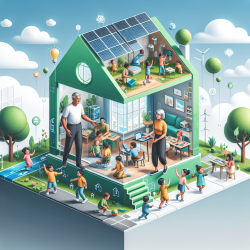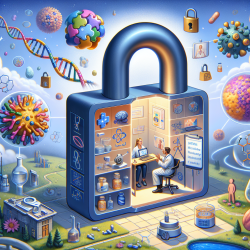Introduction
In the quest for creating optimal learning environments, the intersection of green building design and child development presents a promising frontier. As practitioners dedicated to enhancing child outcomes, understanding the implications of green buildings on health and productivity can guide us in creating healthier and more effective educational spaces. The research article "Green Buildings and Health" provides valuable insights into how these structures can improve indoor environmental quality (IEQ) and, subsequently, human health. Let's explore how these findings can inform our practices and encourage further research.
The Promise of Green Buildings
Green buildings are designed to minimize environmental impacts while enhancing human health. They achieve this through optimized indoor environments that reduce exposure to pollutants and promote well-being. For children, who spend a significant portion of their day in educational settings, the benefits of green buildings can be profound. The initial evidence suggests that these buildings offer better IEQ compared to conventional structures, with direct benefits to occupants' health.
Key Findings from the Research
The research highlights several critical areas where green buildings outperform their conventional counterparts:
- Improved Air Quality: Green buildings often feature enhanced ventilation systems and materials that emit fewer volatile organic compounds (VOCs), leading to cleaner indoor air.
- Reduced Allergens: These buildings typically have lower levels of allergens, which can significantly benefit children with asthma or allergies.
- Enhanced Comfort: Occupants report higher satisfaction with thermal comfort, lighting, and acoustics, all of which contribute to a more conducive learning environment.
- Healthier Outcomes: There is evidence of reduced absenteeism due to respiratory issues and improved overall well-being among occupants.
Implications for Practitioners
For practitioners in the field of speech-language pathology and online therapy, integrating the principles of green building design into school environments can enhance therapeutic outcomes. Here are a few ways to apply these findings:
- Advocate for Green Spaces: Encourage schools to adopt green building standards, emphasizing the health benefits for students.
- Utilize Data-Driven Approaches: Collect and analyze data on student health and performance in relation to their learning environments to advocate for improvements.
- Collaborate with Architects and Planners: Work with building designers to ensure that new school projects incorporate features that promote optimal IEQ.
- Educate Stakeholders: Share research findings with parents, educators, and policymakers to build support for healthier school environments.
Encouraging Further Research
While the current evidence is promising, there is a need for more comprehensive studies that utilize objective health metrics. Future research should focus on identifying specific building features that most significantly impact health and learning outcomes. By doing so, we can refine our approaches and continue to advocate for environments that support the holistic development of children.
Conclusion
Green buildings represent a vital opportunity to enhance the health and productivity of educational environments. By integrating these principles into our practice, we can contribute to creating spaces that not only support learning but also foster overall well-being. As we move forward, let us remain committed to data-driven decisions and continuous research to ensure the best outcomes for the children we serve.
To read the original research paper, please follow this link: Green Buildings and Health.










